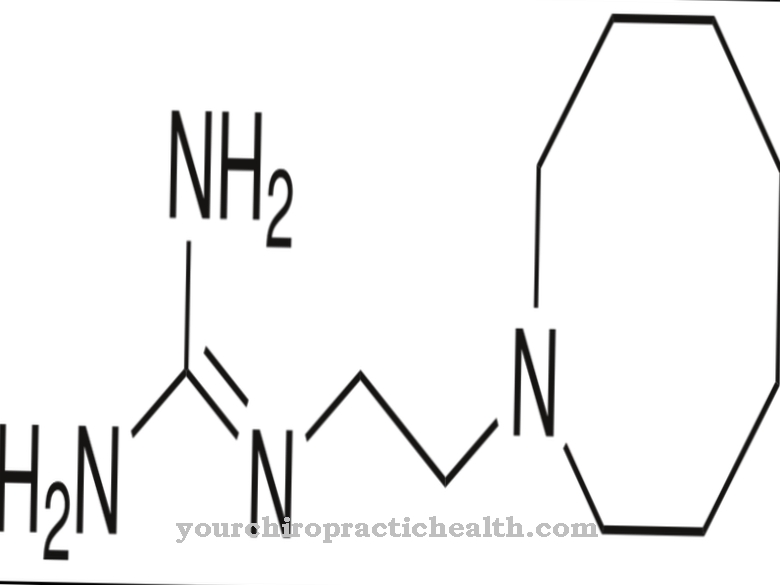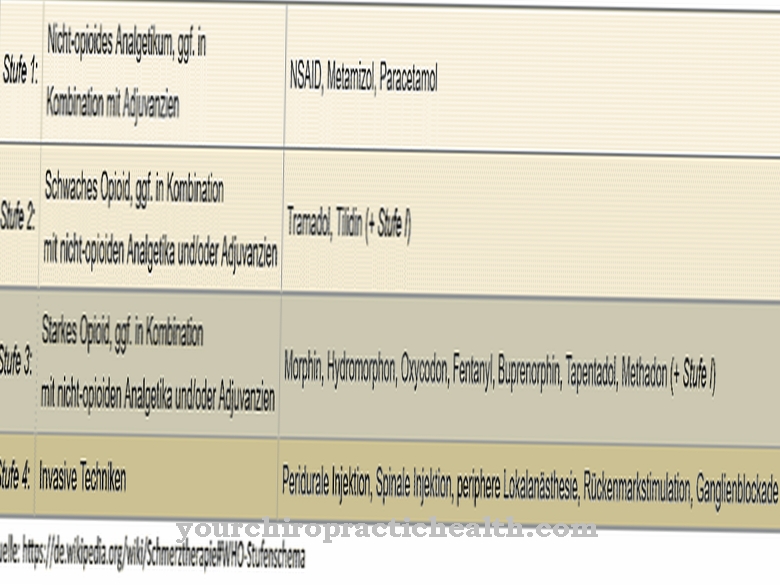At Ondansetron it is an important antiemetic that belongs to the Setrone class of active ingredients. Ondansetron achieves its effects by inhibiting the 5HT3 receptors. Because of this mode of action, ondansetron is also considered a serotonin receptor antagonist. The active ingredient is sold under the trade name Zofran® and used to treat nausea, vomiting and nausea.
What is ondansetron?
Ondansetron is an active ingredient that is used in human medicine to treat nausea, severe nausea and vomiting. It is therefore considered an anti-emetic. Its effectiveness is based on its activity in the brain. There, ondansetron inhibits the so-called 5HT3 receptors, which has a direct influence on the concentration of the messenger substance serotonin in the brain. A mode of action that is also used with certain psychotropic drugs.
In chemistry, ondansetron is also referred to as (RS) -9-methyl-3- (2-methylimidazol-1-ylmethyl) -1,2,3,9-tetrahydrocarbazol-4-one, which is a chemical formula of C 18 - H 19 - N 3 - O corresponds. The moral mass of the drug is approximately 293.37 g / mol. Ondansetron is subject to prescription and pharmacy requirements. The drug is usually taken orally in the form of film-coated tablets. In acute cases, an intravenous dosage form may also be indicated.
Pharmacological effect on the body and organs
After taking ondansetron, the patient experiences a noticeable reduction in nausea. This inhibiting effect is due to an inhibition of the messenger substance serotonin. In addition to the feeling of hunger, serotonin also controls the activity of the gastrointestinal tract and is also an important factor influencing the human mind. If the messenger substance is contained in too high a concentration in the human body, the visceral afferent vagus and vagus are activated the vomiting center of the central nervous system (also CNS). Ondansetron attaches to the 5HT3 receptors in the brain, to which serotonin usually attaches. Since the corresponding receptors for the messenger substance are no longer available, an inhibition occurs. This reduces the existing urge to vomit.
Since various cytostatics and various radiation therapies lead to a massive increase in the serotonin content, which can cause nausea, ondansetron is mainly administered to cancer patients. On the other hand, ondansetron is less suitable for treating nausea that is not triggered by serotonin, which is why motion sickness can be treated with other preparations.
In contrast to other antiemetics, ondansetron has no effects on the histamine, muscaricin or dopamine receptors, which is why the drug is not a psychotropic drug and has no significant area of application for the treatment of mental illnesses.
Medical application & use for treatment & prevention
Ondansetron is usually given in the form of film-coated tablets for oral consumption. In acute cases, the administration of an infusion solution or administration by syringe is also conceivable.
The main area of application for ondansetron is cancer therapy. This is where it is used to combat the side effects of chemotherapy or radiation therapy. Both cause a pathogenic increase in the serotonin content, which can lead to strong nausea. Ondansetron counteracts this.
Due to the specific mode of action, which is based on the inhibition of serotonin, there is no indication for the treatment of motion sickness.
You can find your medication here
➔ Medicines against nausea and vomitingRisks & side effects
Ondansetron can cause undesirable side effects. The intake has to be stopped entirely if there is a medical contraindication. This is always the case when there are specific circumstances that call the success of the treatment into question from a medical point of view (contraindication). Ondansetron must not be taken if an intolerance or hypersensitivity (allergy) is known. Patients who suffer from cardiac arrhythmias in the form of long QT syndrome should also not take ondansetron. There is also a contraindication for heart muscle weaknesses as well as during breastfeeding and pregnancy.
In addition, attention must be paid to potential interactions with other active ingredients. Ondansetron must not be taken at the same time as apomorphine, a drug used to treat Parkinson's disease. The two active ingredients lead to mutually dependent changes in effectiveness, which can lead to unmanageable risks. Frequently there is massive drop in blood pressure, which can lead to fainting.
In addition, it is known that ondansetron leads to interactions with the drugs phenytoin, carbamazepine and rifampicin. Simultaneous use should also be avoided here. Furthermore, ondansetron leads to a reduced effectiveness of the pain reliever tramadol, so that other pain relievers may have to be used.








.jpg)



















